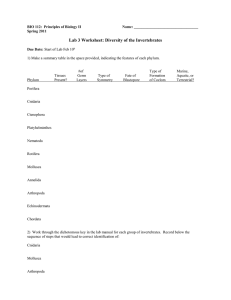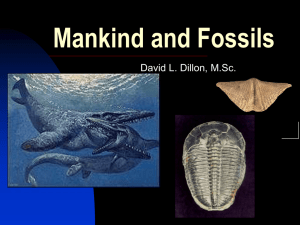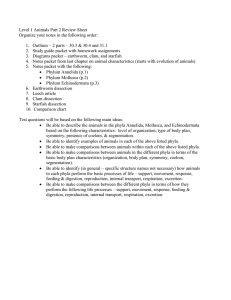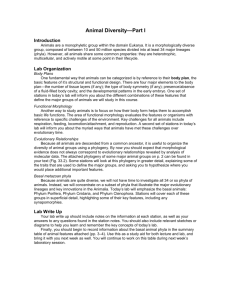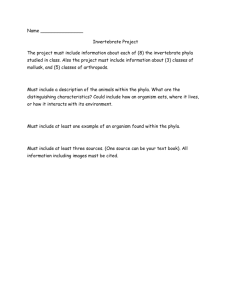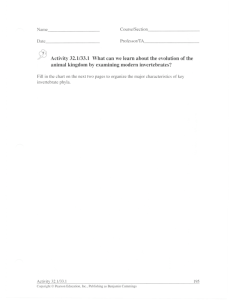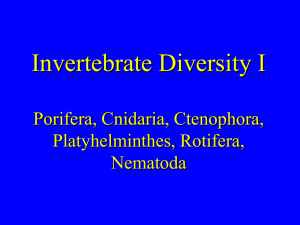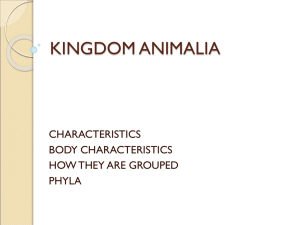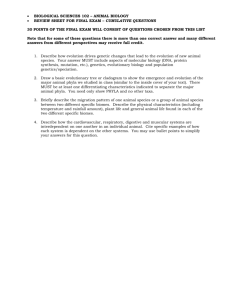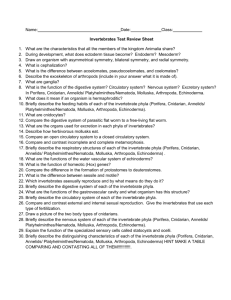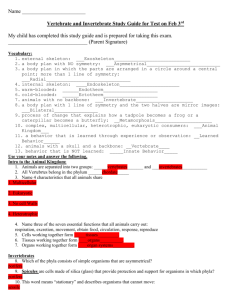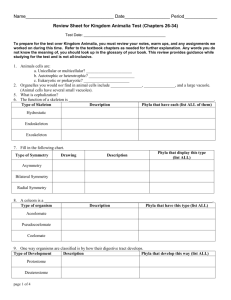Activity #1 - Using a Dichotomous Key for Invertebrate Phyla
advertisement
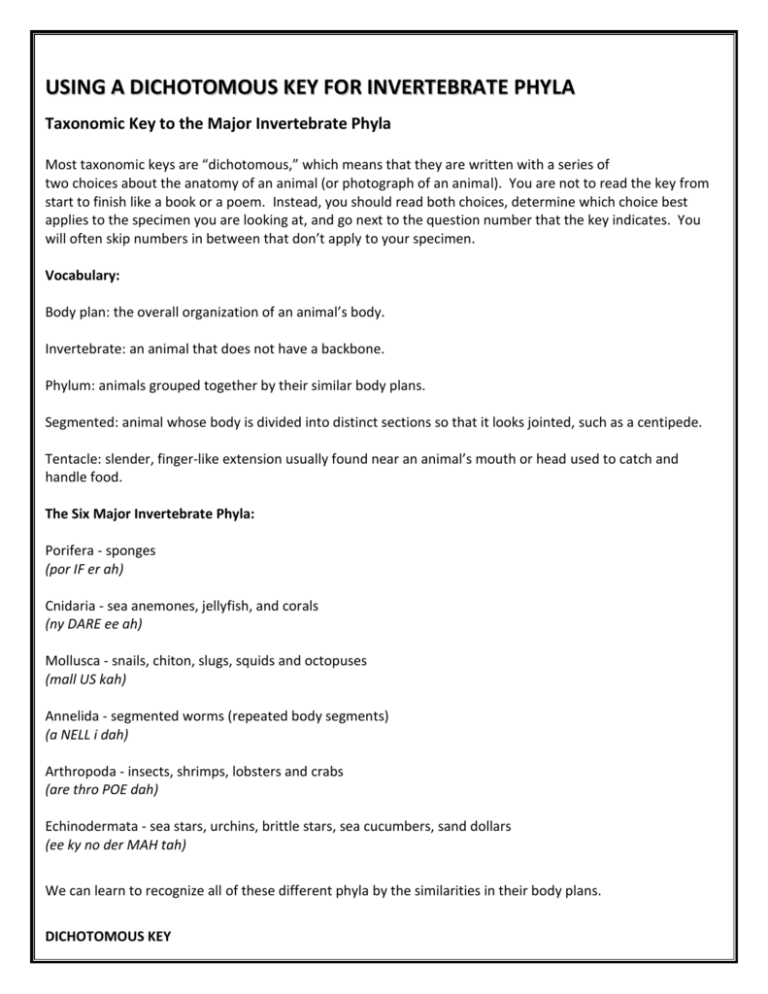
USING A DICHOTOMOUS KEY FOR INVERTEBRATE PHYLA Taxonomic Key to the Major Invertebrate Phyla Most taxonomic keys are “dichotomous,” which means that they are written with a series of two choices about the anatomy of an animal (or photograph of an animal). You are not to read the key from start to finish like a book or a poem. Instead, you should read both choices, determine which choice best applies to the specimen you are looking at, and go next to the question number that the key indicates. You will often skip numbers in between that don’t apply to your specimen. Vocabulary: Body plan: the overall organization of an animal’s body. Invertebrate: an animal that does not have a backbone. Phylum: animals grouped together by their similar body plans. Segmented: animal whose body is divided into distinct sections so that it looks jointed, such as a centipede. Tentacle: slender, finger-like extension usually found near an animal’s mouth or head used to catch and handle food. The Six Major Invertebrate Phyla: Porifera - sponges (por IF er ah) Cnidaria - sea anemones, jellyfish, and corals (ny DARE ee ah) Mollusca - snails, chiton, slugs, squids and octopuses (mall US kah) Annelida - segmented worms (repeated body segments) (a NELL i dah) Arthropoda - insects, shrimps, lobsters and crabs (are thro POE dah) Echinodermata - sea stars, urchins, brittle stars, sea cucumbers, sand dollars (ee ky no der MAH tah) We can learn to recognize all of these different phyla by the similarities in their body plans. DICHOTOMOUS KEY 1. Body shape is regular........................................................................................... Go to 2 Body shape is not regular (like a lumpy blob).....................................................Porifera 2. Has a head or eyes................................................................................................ Go to 3 Does not have a head or eyes............................................................................... Go to 4 3. Body is segmented (it has distinct body sections)............................................... Go to 5 Body is not segmented.......................................................................................Mollusca 4. Has tentacles ....................................................................................................... Cnidaria Does not have tentacles........................................................................................ Go to 6 5. All body segments look the same......................................................................... Go to 7 Body segments do not all look the same (some are different)........................Arthropoda 6. Has spines.................................................................................................Echinodermata Does not have spines ........................................................................................... Go to 8 7. Animal has legs (even tiny ones)........................................................................ Go to 10 Does not have legs..............................................................................................Mollusca 8. Animal attached to bottom...................................................................................Porifera Not attached to bottom........................................................................................ Go to 9 9. Body very soft and jelly-like .............................................................................. Cnidaria Body more firm.........................................................................................Echinodermata 10. Animal has hard covering all over body (including legs) ..............................Arthropoda Does not have hard covering ............................................................................ Annelida NAME: ____________________ PER _____ DATE ___________ USING A DICHOTOMOUS KEY FOR INVERTEBRATE PHYLA WRITE-UP PROCEDURE: PART A. Using the dichotomous key; identify the phyla of the specimens on the picture cards provided. On the back of each picture card is a number. After you determine the phyla record the name on the corresponding line below. You may or may not use all of the lines provided. 1. _____________________________ 13. _____________________________ 2. _____________________________ 14. _____________________________ 3. _____________________________ 15. _____________________________ 4. _____________________________ 16. _____________________________ 5. _____________________________ 17. _____________________________ 6. _____________________________ 18. _____________________________ 7. _____________________________ 19. _____________________________ 8. _____________________________ 20. _____________________________ 9. _____________________________ 21. _____________________________ 10. _____________________________ 22. _____________________________ 11. _____________________________ 23. _____________________________ 12. _____________________________ 24. _____________________________ QUESTIONS: 1. What one characteristic that differentiates invertebrates from vertebrates? 2. What are the five features that taxonomists use to sort organisms into the different phyla? 3. What is cephalization and why is it important (pg 655) in the development of more complex animals? 4. What is significant about sponges (phylum Porifera) in the evolution of animals (pg. 673)? 5. What animals belong to the phylum Mollusca (pp 705-711)? 6. To what group are echinoderms (sea stars and sea urchins) most closely related? Why?
